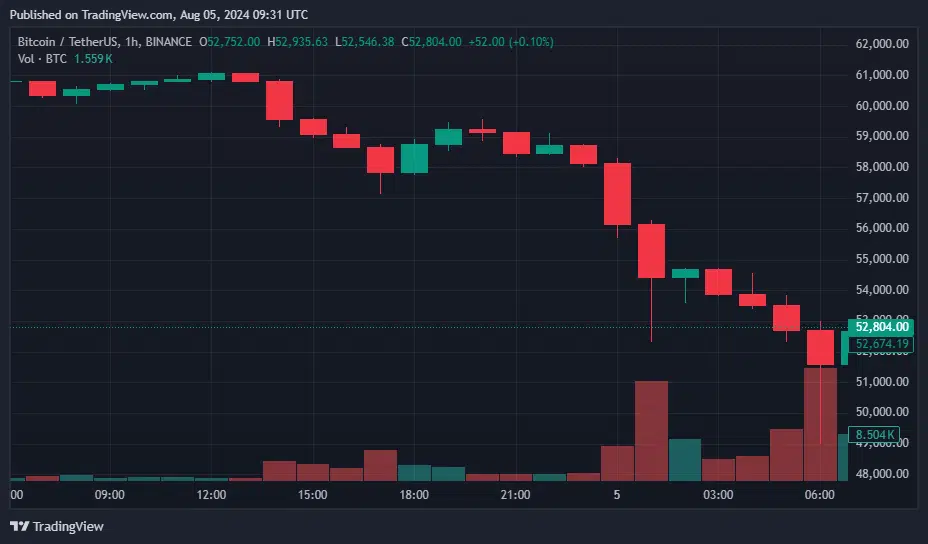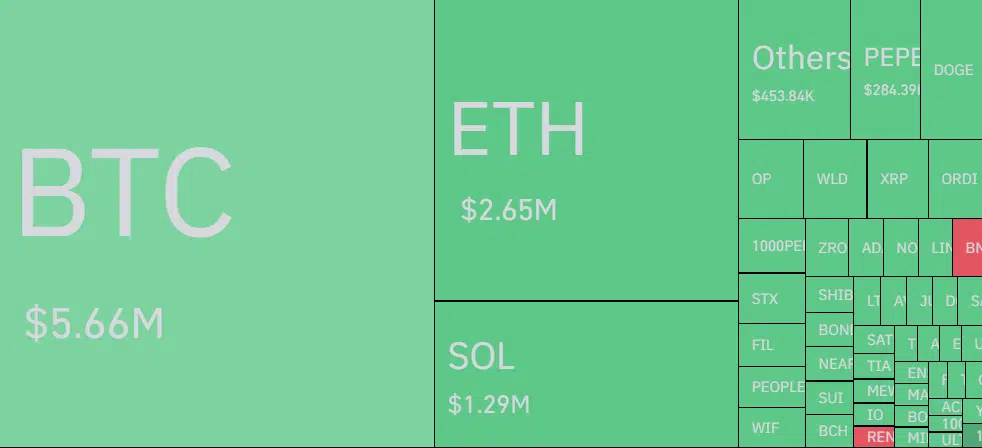On August 5, Bitcoin fell to $49,221, which was a significant drop from its recent high point of around $58,350. With $79.5 billion worth of trades and a market value of $1.04 trillion, the coin is still 28.2% below its all-time high of $73,737 set on March 14.

This drop is part of an increased market drop that also affected Ethereum. It fell almost 20%, from $2,695 to a low of $2,171, before partially rising back to $2,321.
According to CoinGlass, over $1.07 billion worth of leveraged positions have been closed in the last 24 hours. Long positions in Bitcoin and Ethereum lost $305.49 million and $299.45 million, respectively.
Bitcoin Faces Market Instability
Several things are to blame for this market instability. The Japanese Nikkei 225 index dropped 7.1% because Japanese banking stocks lost a lot of value after the central bank raised interest rates. The pressure was also increased by disappointing job numbers in the U.S., a drop in big tech stocks, and large-scale liquidations by companies like Jump Crypto.

The latest drop, which erased $200 to $500 billion from the total cryptocurrency market cap, is the most significant decline in 72 hours in more than a year. The Bitcoin fear and greed measure has dropped sharply from last week’s high of 74 to 31.
This shows that the market is moving from fear to greed. On Friday, spot Bitcoin ETFs in the United States also lost about $237 million in cash.Even though the market as a whole crashed, Bitcoin’s dominance measure rose to 56.23%, the highest level since May 2021.
This means that there is more consolidation. Analysts also think that rising tensions between Iran and Israel may be making the global market less stable, which could hurt cryptocurrency investments as investors look for better assets.







